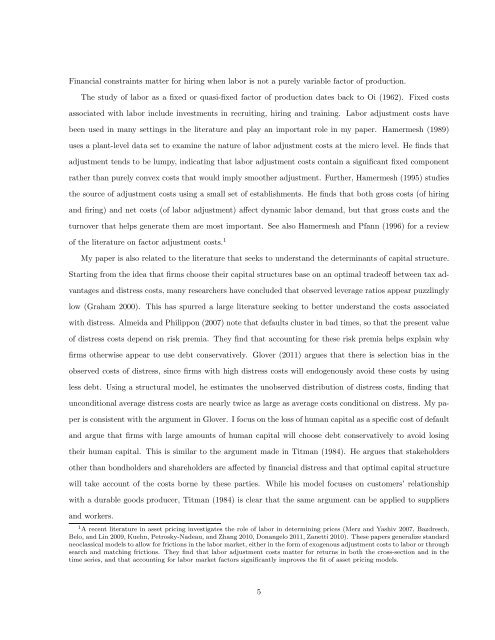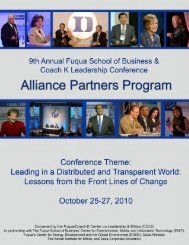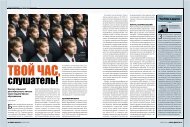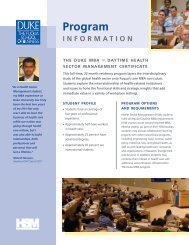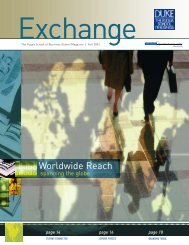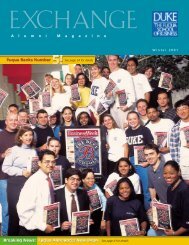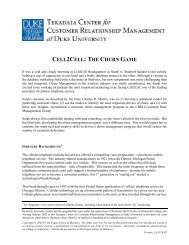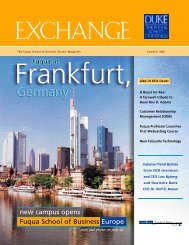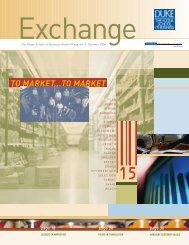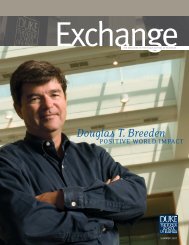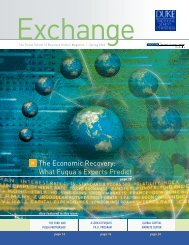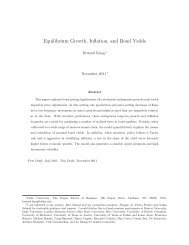A Structural Model of Human Capital and Leverage - Duke ...
A Structural Model of Human Capital and Leverage - Duke ...
A Structural Model of Human Capital and Leverage - Duke ...
Create successful ePaper yourself
Turn your PDF publications into a flip-book with our unique Google optimized e-Paper software.
Financial constraints matter for hiring when labor is not a purely variable factor <strong>of</strong> production.<br />
The study <strong>of</strong> labor as a fixed or quasi-fixed factor <strong>of</strong> production dates back to Oi (1962). Fixed costs<br />
associated with labor include investments in recruiting, hiring <strong>and</strong> training. Labor adjustment costs have<br />
been used in many settings in the literature <strong>and</strong> play an important role in my paper. Hamermesh (1989)<br />
uses a plant-level data set to examine the nature <strong>of</strong> labor adjustment costs at the micro level. He finds that<br />
adjustment tends to be lumpy, indicating that labor adjustment costs contain a significant fixed component<br />
rather than purely convex costs that would imply smoother adjustment. Further, Hamermesh (1995) studies<br />
the source <strong>of</strong> adjustment costs using a small set <strong>of</strong> establishments. He finds that both gross costs (<strong>of</strong> hiring<br />
<strong>and</strong> firing) <strong>and</strong> net costs (<strong>of</strong> labor adjustment) affect dynamic labor dem<strong>and</strong>, but that gross costs <strong>and</strong> the<br />
turnover that helps generate them are most important. See also Hamermesh <strong>and</strong> Pfann (1996) for a review<br />
<strong>of</strong> the literature on factor adjustment costs. 1<br />
My paper is also related to the literature that seeks to underst<strong>and</strong> the determinants <strong>of</strong> capital structure.<br />
Starting from the idea that firms choose their capital structures base on an optimal trade<strong>of</strong>f between tax ad-<br />
vantages <strong>and</strong> distress costs, many researchers have concluded that observed leverage ratios appear puzzlingly<br />
low (Graham 2000). This has spurred a large literature seeking to better underst<strong>and</strong> the costs associated<br />
with distress. Almeida <strong>and</strong> Philippon (2007) note that defaults cluster in bad times, so that the present value<br />
<strong>of</strong> distress costs depend on risk premia. They find that accounting for these risk premia helps explain why<br />
firms otherwise appear to use debt conservatively. Glover (2011) argues that there is selection bias in the<br />
observed costs <strong>of</strong> distress, since firms with high distress costs will endogenously avoid these costs by using<br />
less debt. Using a structural model, he estimates the unobserved distribution <strong>of</strong> distress costs, finding that<br />
unconditional average distress costs are nearly twice as large as average costs conditional on distress. My pa-<br />
per is consistent with the argument in Glover. I focus on the loss <strong>of</strong> human capital as a specific cost <strong>of</strong> default<br />
<strong>and</strong> argue that firms with large amounts <strong>of</strong> human capital will choose debt conservatively to avoid losing<br />
their human capital. This is similar to the argument made in Titman (1984). He argues that stakeholders<br />
other than bondholders <strong>and</strong> shareholders are affected by financial distress <strong>and</strong> that optimal capital structure<br />
will take account <strong>of</strong> the costs borne by these parties. While his model focuses on customers’ relationship<br />
with a durable goods producer, Titman (1984) is clear that the same argument can be applied to suppliers<br />
<strong>and</strong> workers.<br />
1 A recent literature in asset pricing investigates the role <strong>of</strong> labor in determining prices (Merz <strong>and</strong> Yashiv 2007, Bazdresch,<br />
Belo, <strong>and</strong> Lin 2009, Kuehn, Petrosky-Nadeau, <strong>and</strong> Zhang 2010, Donangelo 2011, Zanetti 2010). These papers generalize st<strong>and</strong>ard<br />
neoclassical models to allow for frictions in the labor market, either in the form <strong>of</strong> exogenous adjustment costs to labor or through<br />
search <strong>and</strong> matching frictions. They find that labor adjustment costs matter for returns in both the cross-section <strong>and</strong> in the<br />
time series, <strong>and</strong> that accounting for labor market factors significantly improves the fit <strong>of</strong> asset pricing models.<br />
5


